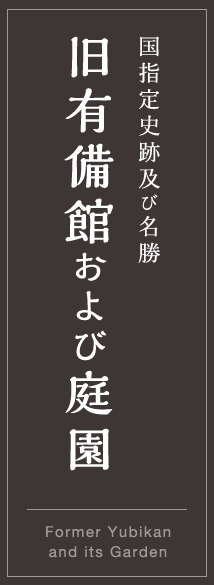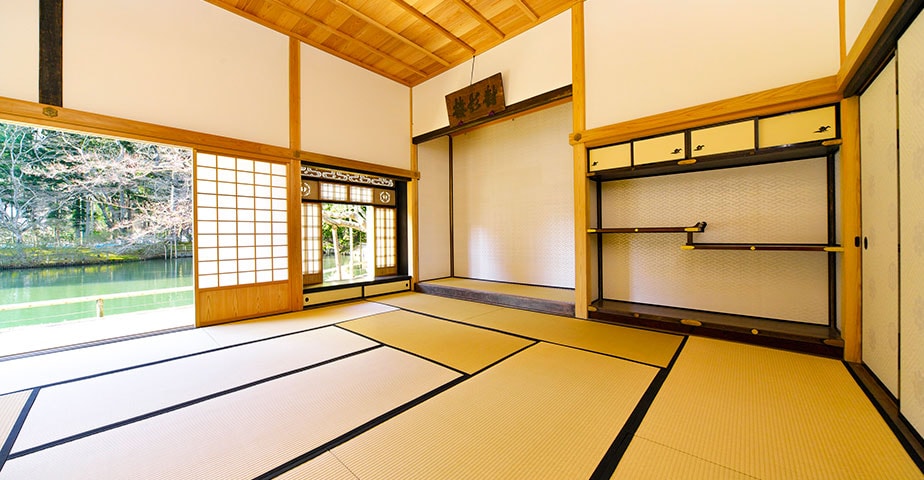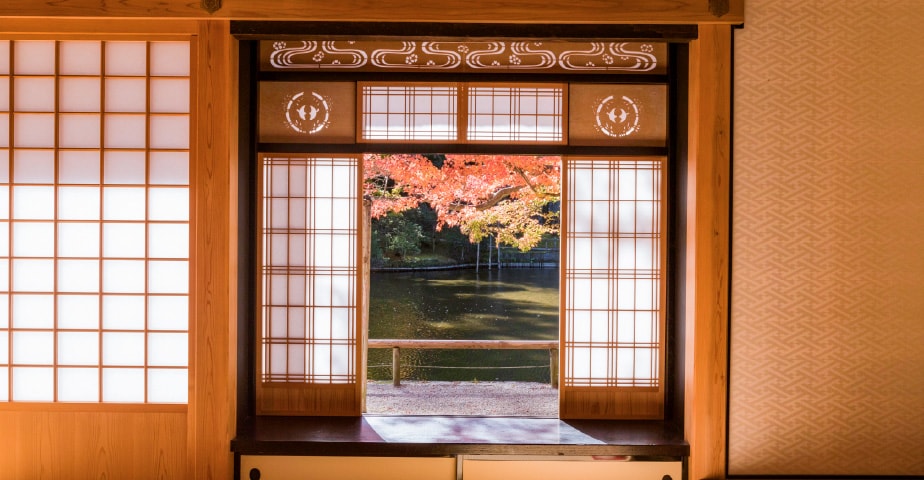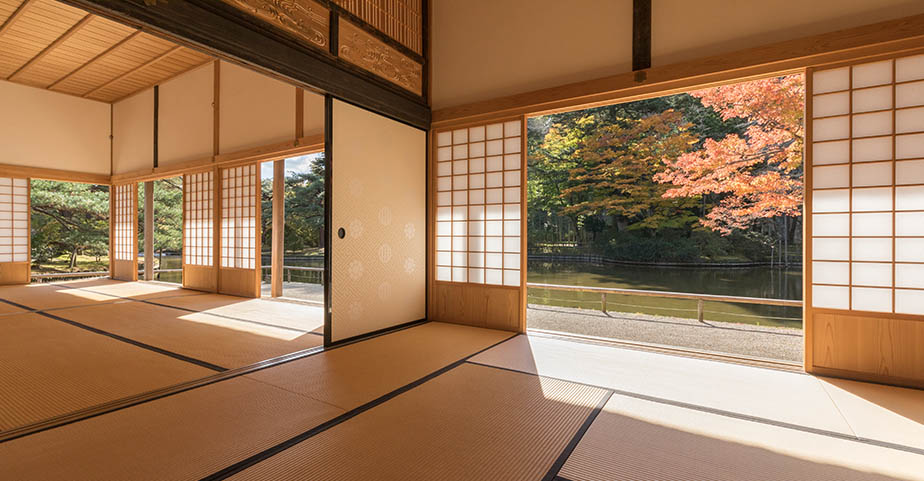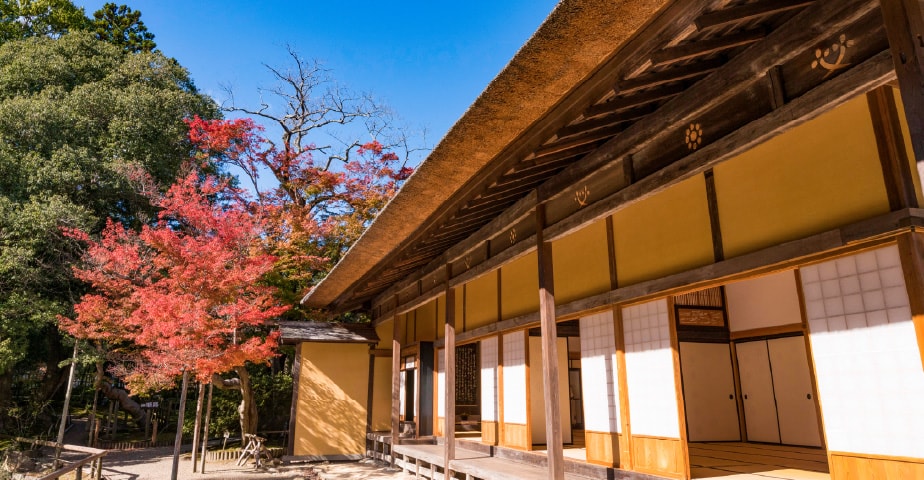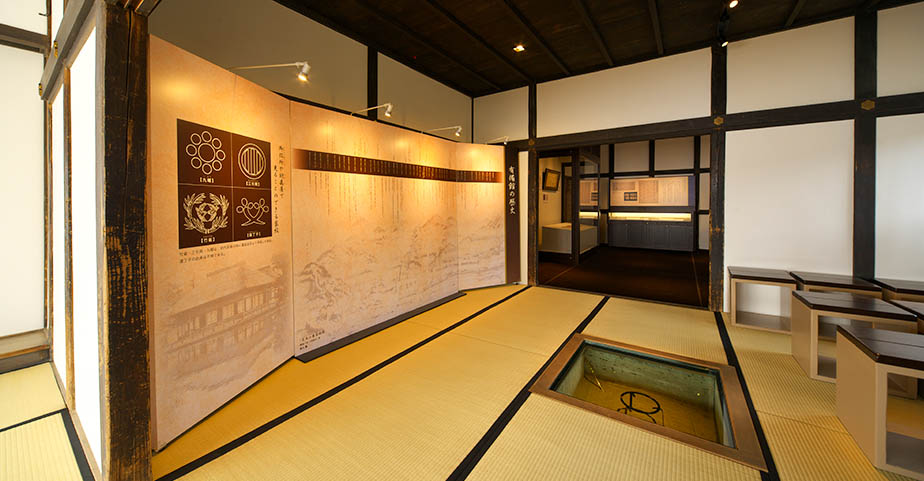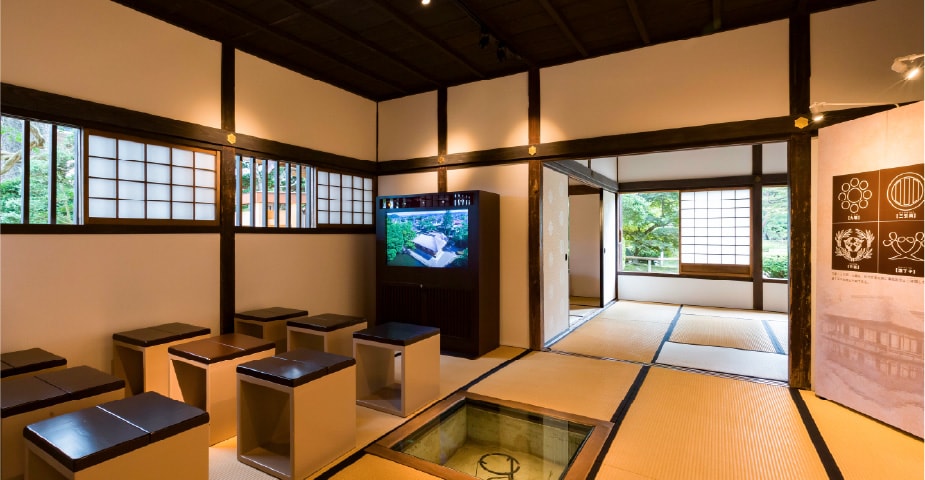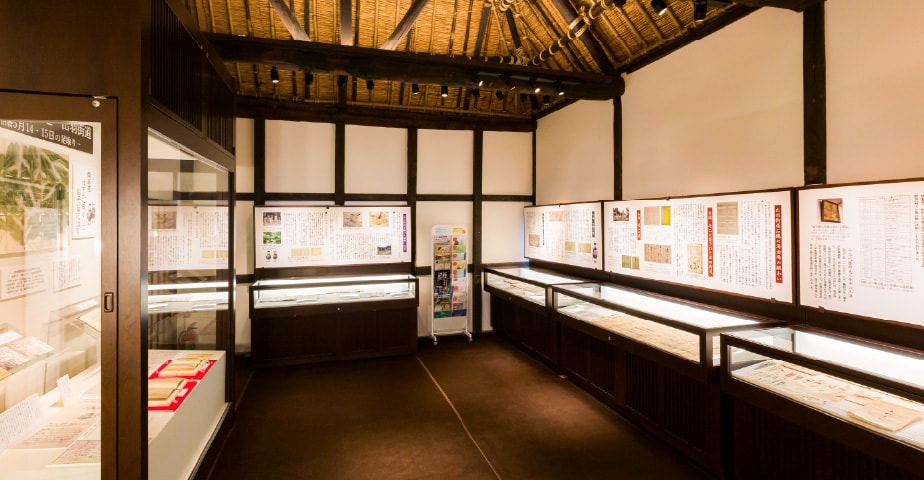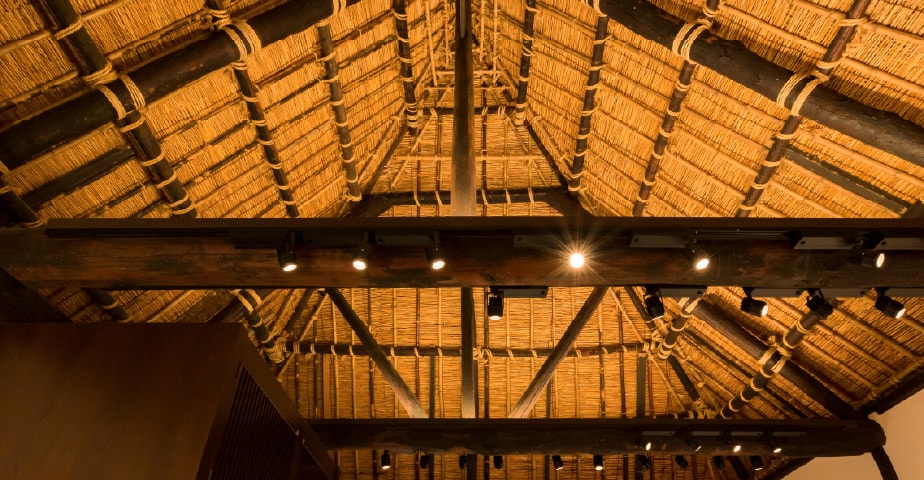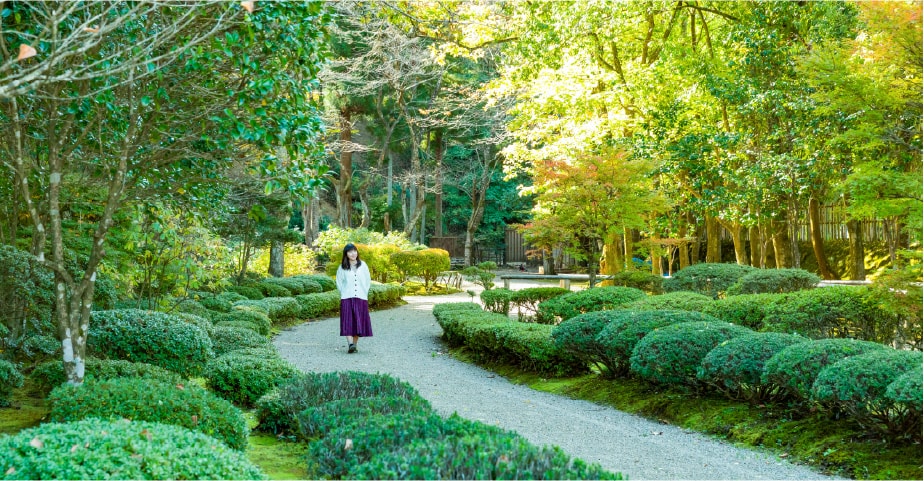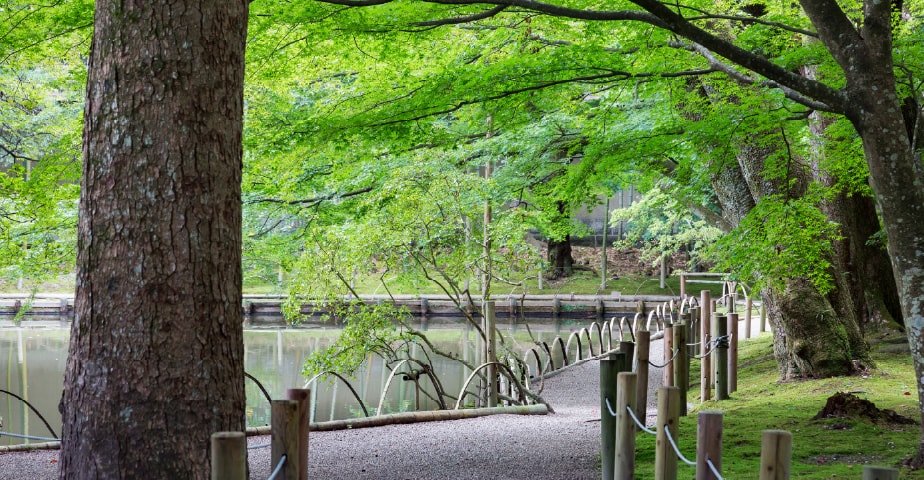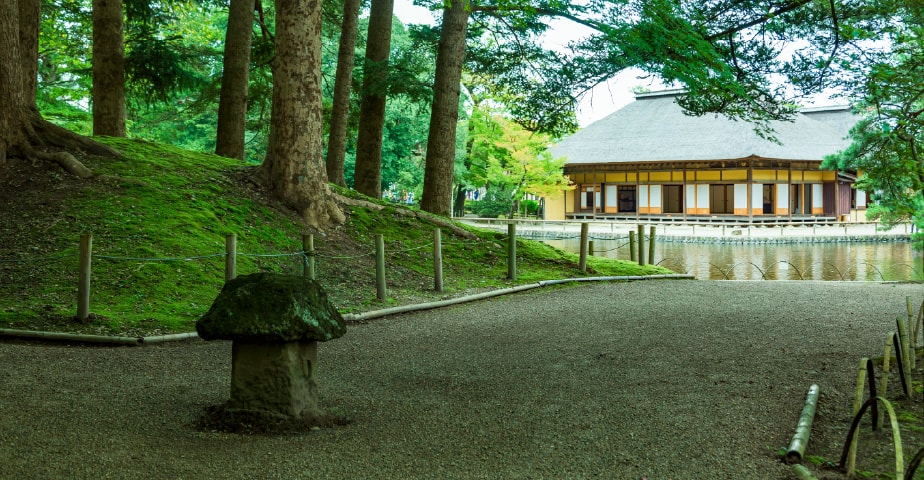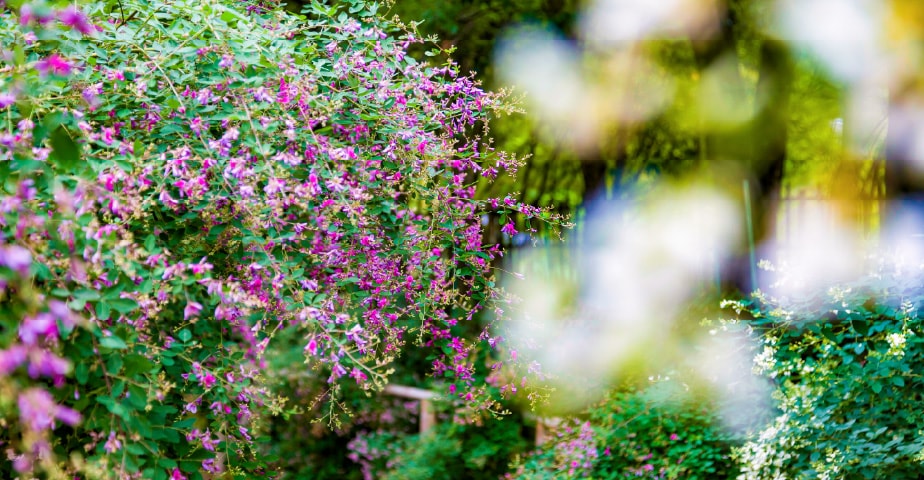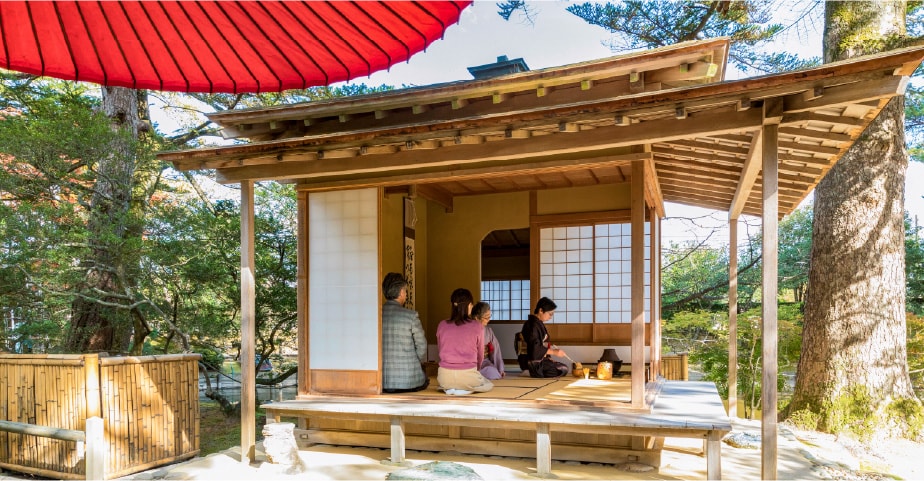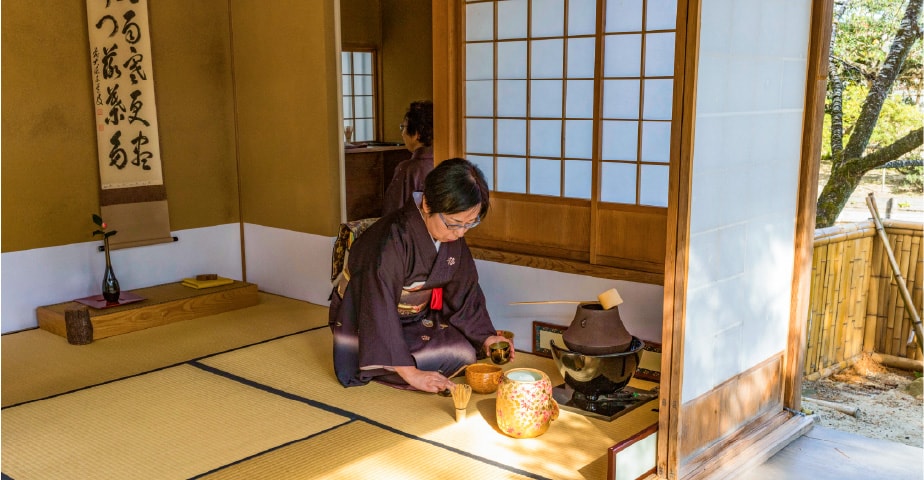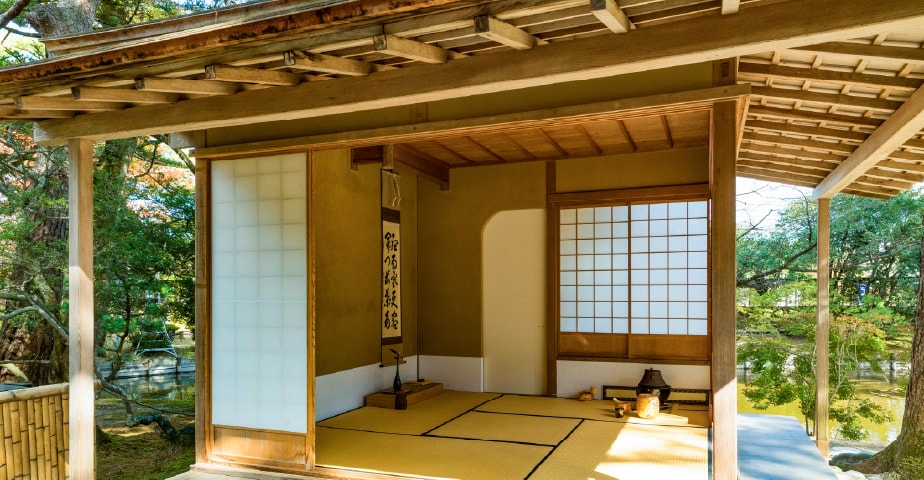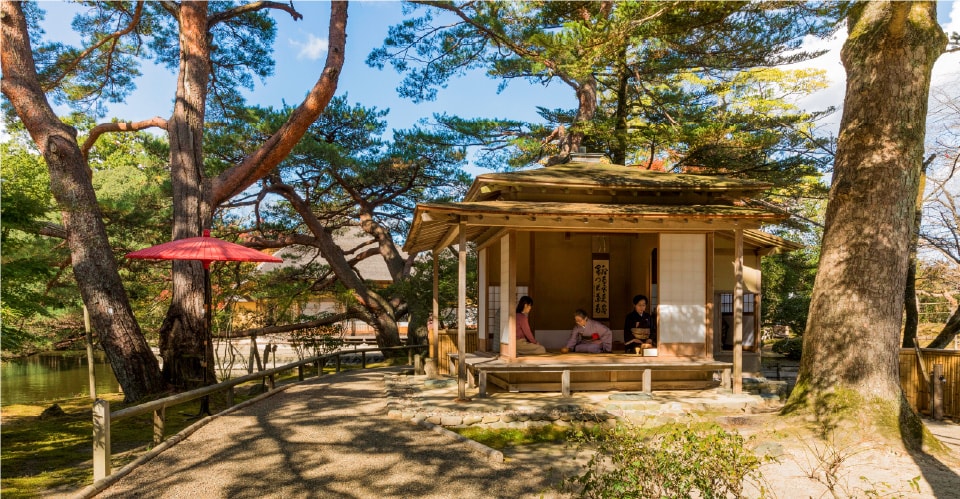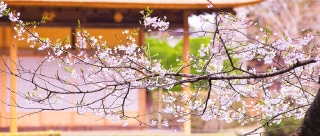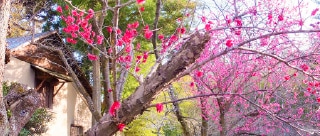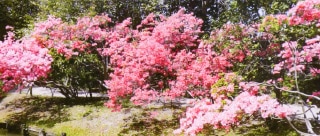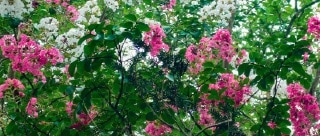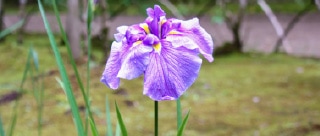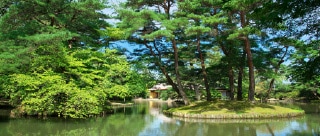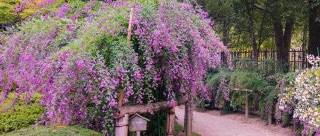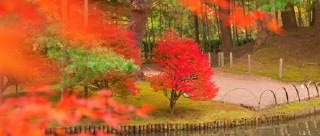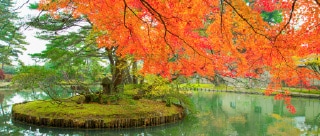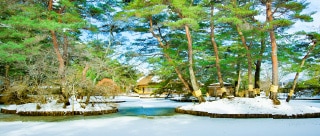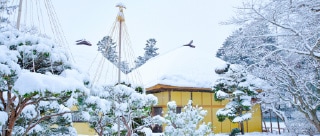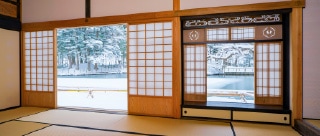The Yubikan was a school constructed by the Iwadeyama Date clan, the retainer of the Sendai domain in the Edo era. The surviving Oaratamedokoro (main building) of the Yubikan is likely to have been built in 1677 as a retreat for Munetoshi, the 2nd generation lord, and was also used as the daimyo’s secondary residence called “Taieiro”.
-
御改所
O-aratame-dokoroIt is said that the lord gave lectures and oral examinations to students in this building.
-
附属屋
FuzokuyaThis building was used as a waiting room for retainers.
-
庭園
GardenThe gardens are said to have been constructed in 1715 by Murayasu, the 4th generation lord, and there are 4 islands in the pond called Nakajima, Tsurugajima, Kameko Nakajima and Kabutojima.
-
茶亭
Tea PavilionThe tea house on Nakajima was named Shokaan.
Site Map
If you click on the headings on the map, you can view further information about the different places around the site.
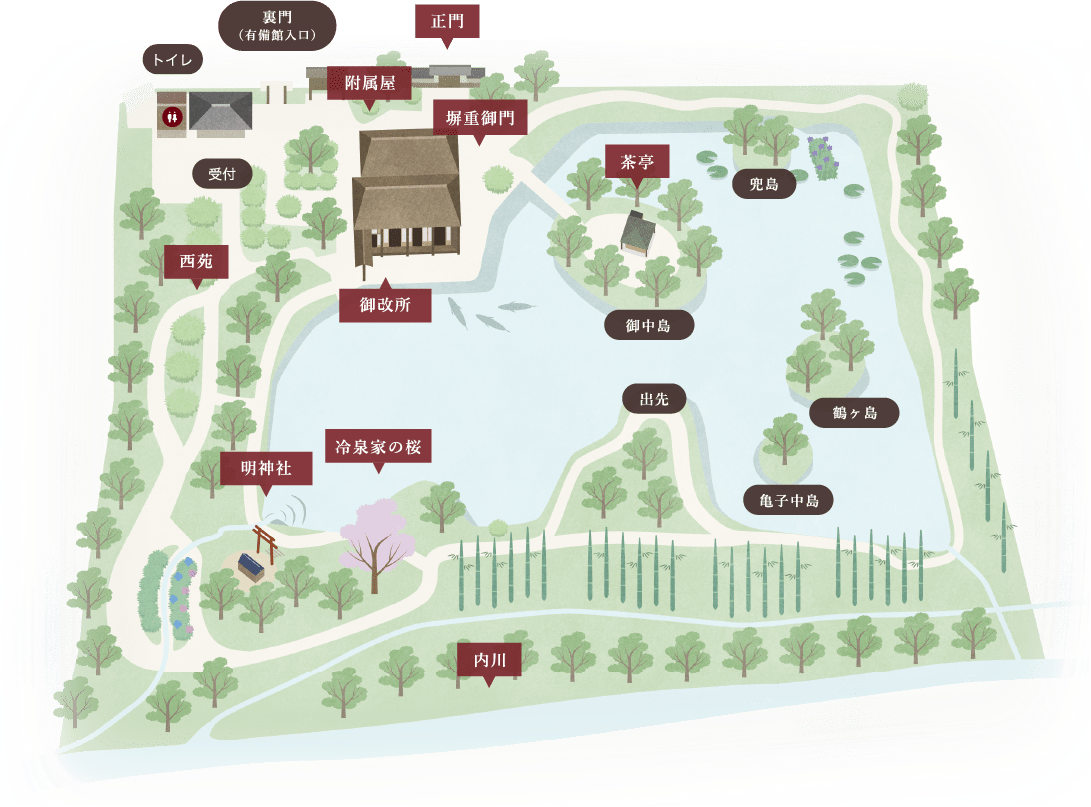
-
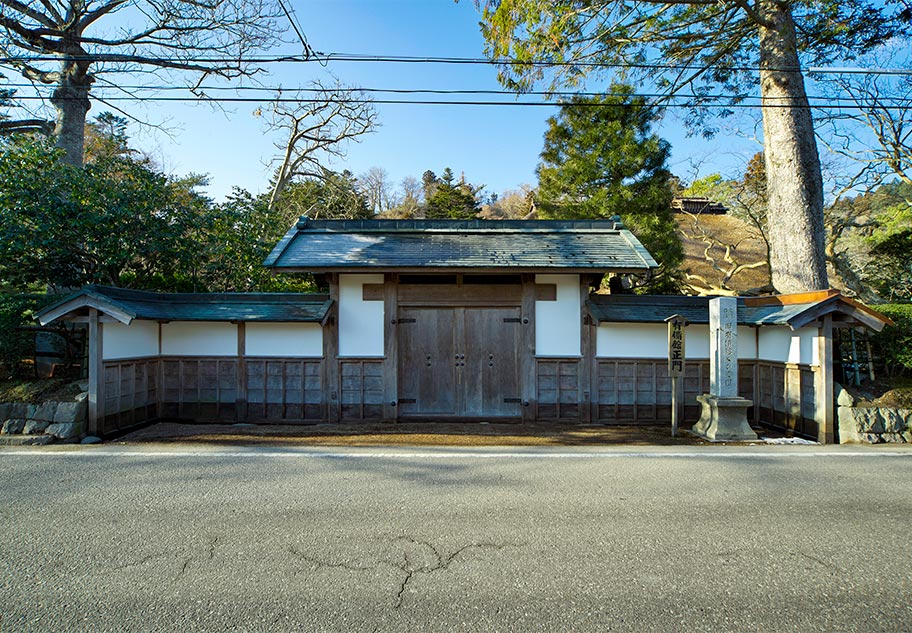
This was restored in 1976 as a sangen-ikko yakuimon-style gate with copper roofing and 9m sodebei fencing. The original gate is said to have been of simple design with a shingle roof made with wood chippings.
-
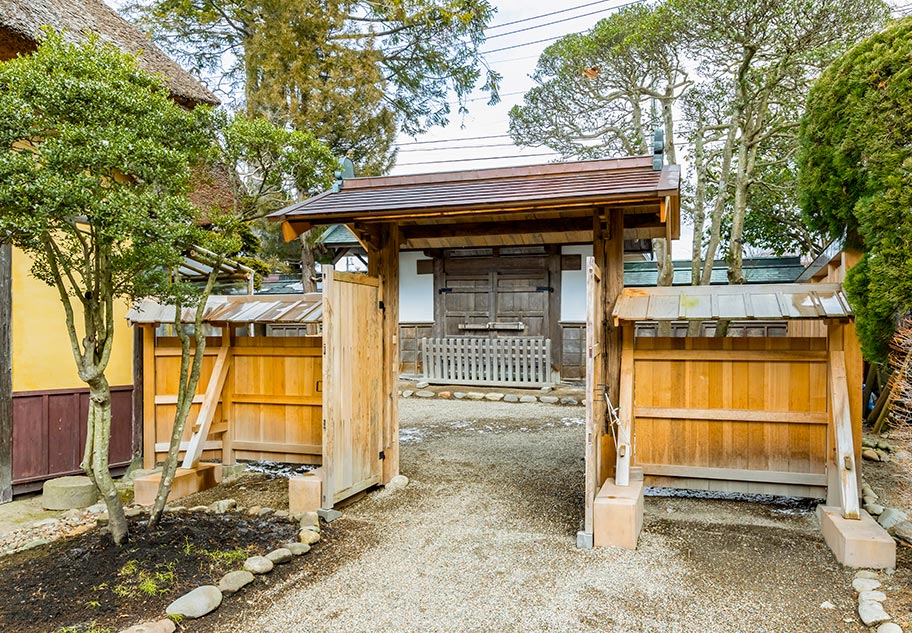
-
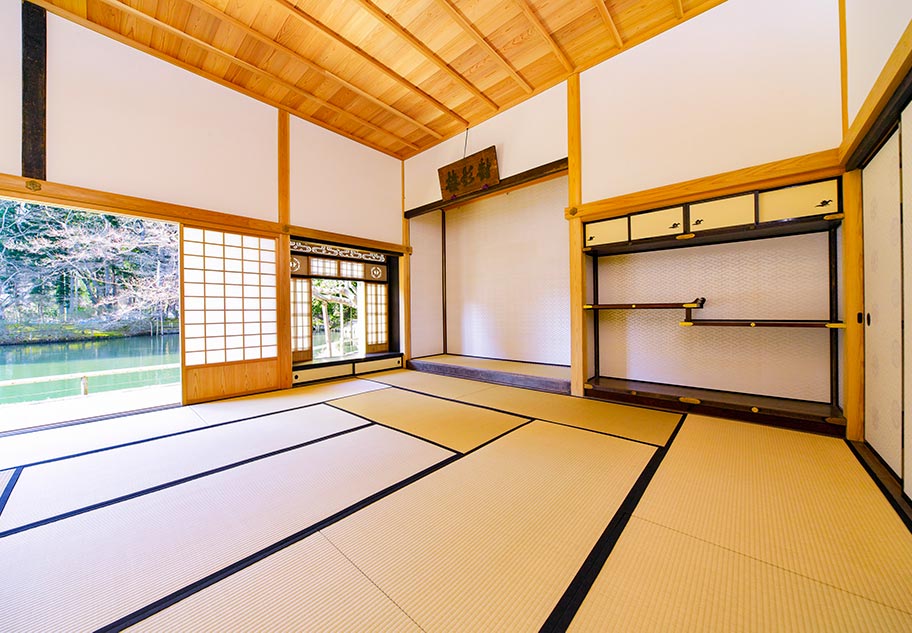
This building was known as the shoin (study) of the retreat and daimyo’s secondary residence exclusively for the feudal lords and family heads. This building is said to be where the lord gave lectures and oral examinations to students in the Yubikan.
-
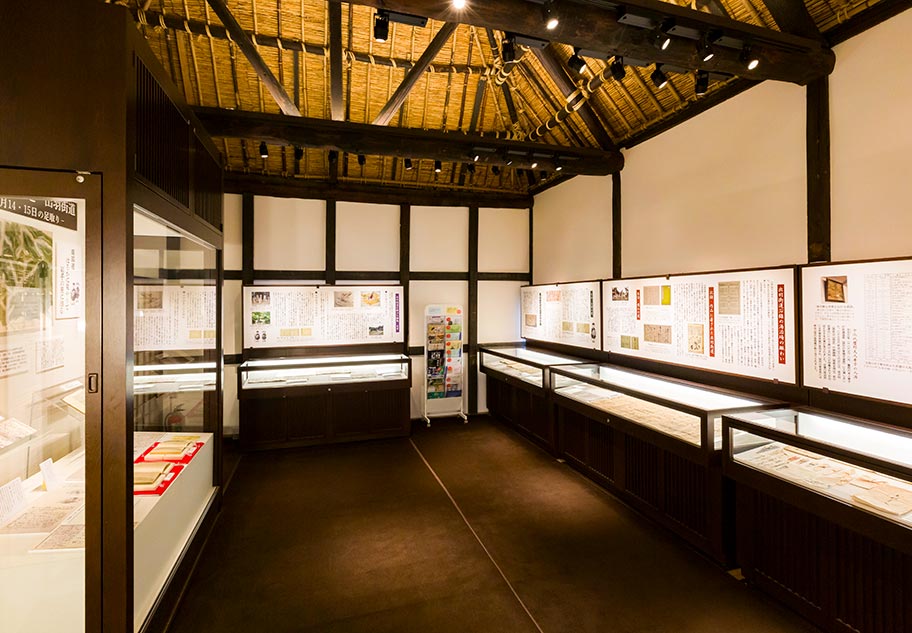
This building was used as a waiting room for retainers and called the hiroma (reception room) of the retreat and daimyo’s secondary residence. The official name of this building is unknown.
-
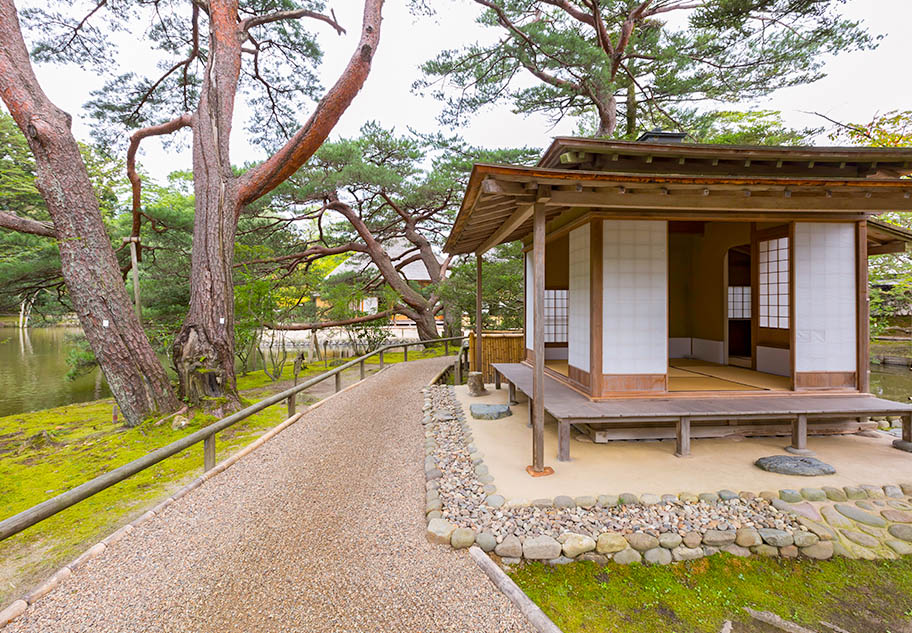
This tea pavilion called Shokaan is 4.5 tatami mats in size and has a single pyramid-shaped roof made with wooden shingles. The eaves of the roof are on the south-east side and a rim runs around the lower part of the roof. Tea ceremonies are held here in spring and autumn.
-
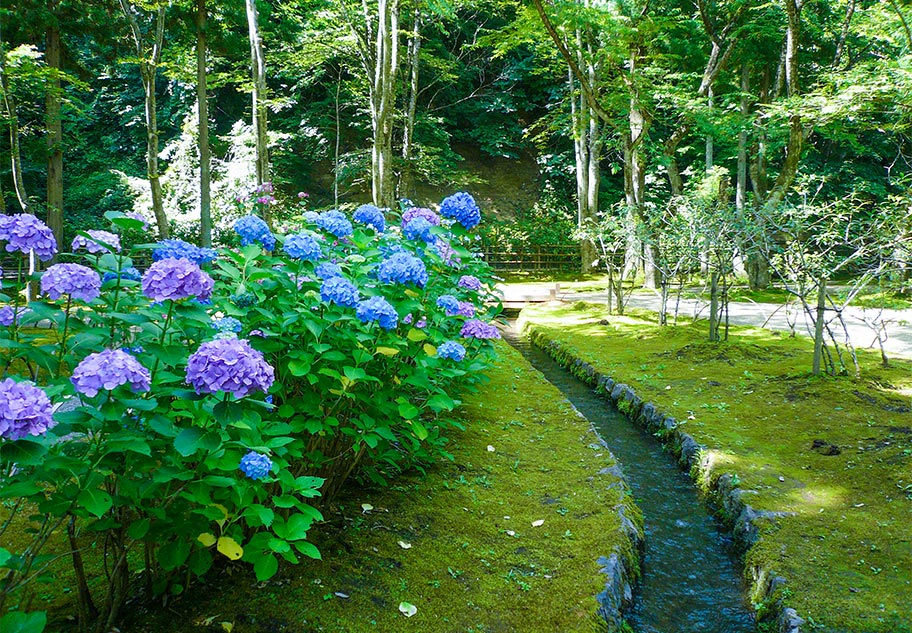
There are several buildings depicted standing on the site of the Saien gardens constructed in 1978 in an illustration painted by Kuninao, the 10th generation lord. These buildings are said to be schools buildings and buildings for instructors.
-
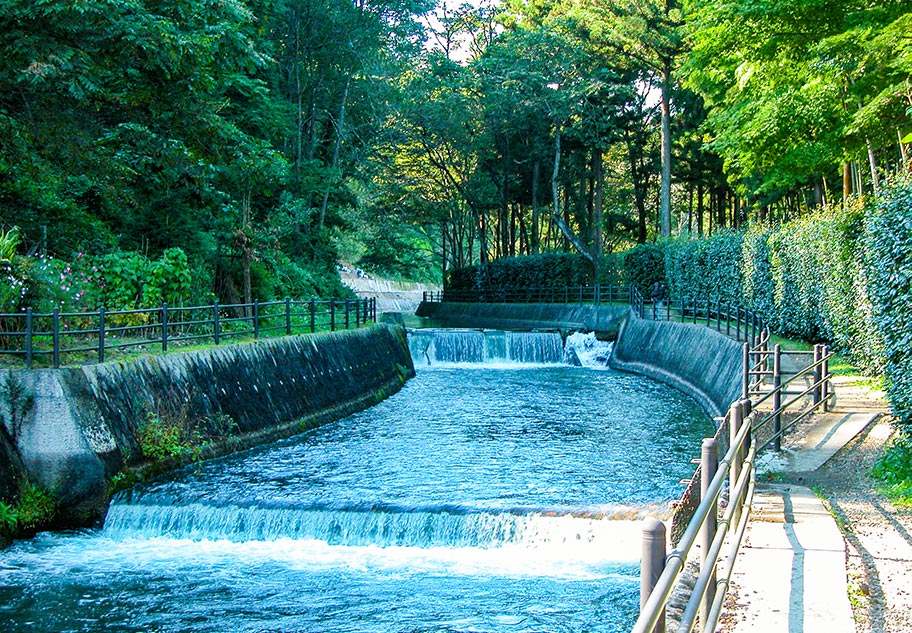
It is thought that this manmade canal was constructed to protect Iwadeyama Castle and to ensure irrigation water and water for daily life in the castle town when Masamune Date moved his castle here during the Oshu rearrangement of territories in 1591. The name Uchikawa (inside river) is said to have been given as it flowed on the inside of a wall called Ichinoko built near the castle. It was registered as a world irrigation heritage in 2016.
-
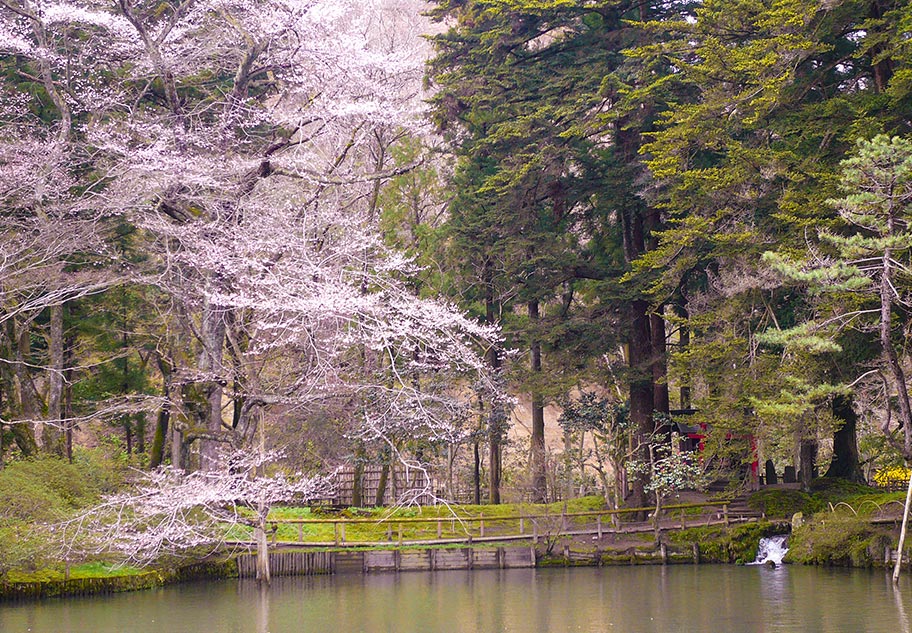
-
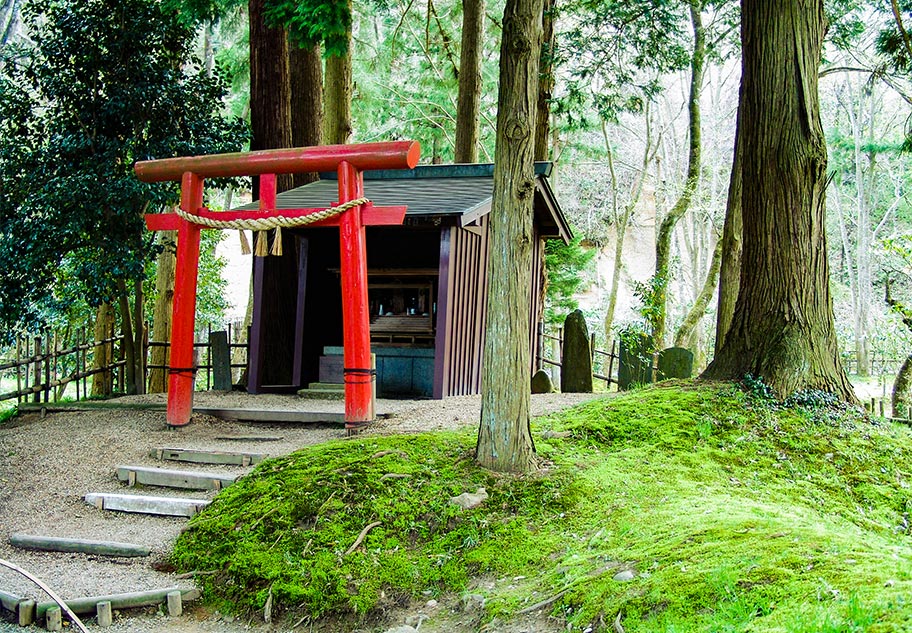
Event Information
A variety of events are held at the Yubikan throughout the
year.
(The event information below may be subject to change depending on
the year.)
-
Yubikan concert
(twice a year)
-
Spring tea ceremony
(early May)
-
Special exhibition
(twice a year)
-
Illuminations
(September)
-
Mini special exhibition
(December – February)
Business Hours & Prices
| Business hours | 9am-5pm (last entry at 4:30pm) |
|---|---|
| Closed | Mondays (or Tuesday if Monday is a national holiday), Dec 29 – Jan 3 |
| Entrance fee | Individual | Groups (20 people or more) |
|---|---|---|
| Adults | 400Yen | 320Yen |
| High School Students | 300Yen | 240Yen |
| Elementary & Junior High School Students | 200Yen | 160Yen |
Transport Access
Location
〒989-6433 6 Kamikawaramachi, Iwadeyama, Osaki, Miyagi Prefecture
Getting here
Traveling by car: About 20mins from Furukawa
IC (parking: 50 regular car spaces, 5 spaces for buses)
Travelling on the JR Rikuu East Line: 1min on
foot from Yubikan Station

